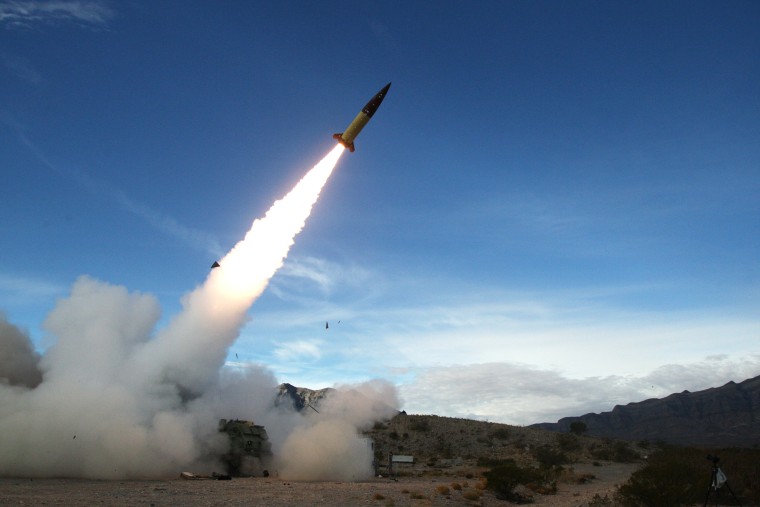The U.S. has decided not to provide the long-range missile systems called ATACMs to Ukraine at this time, according to one of the most senior civilians in the Defense Department.
“We think the Ukrainians can change the dynamic on the battlefield and achieve the type of effects they want to push the Russians back without ATACMs,” Colin Kahl, the undersecretary of defense for policy, told reporters Wednesday afternoon.
Ukraine has been asking the U.S. for ATACMs, which are surface-to-surface long-range missile systems, for months.
Just back from a surprise trip to Ukraine, Kahl was blunt in his assessment: “Our judgment to date has been that the juice isn’t really worth the squeeze on the ATACM.”
He said that could change, but for now, “we’re not there yet on the ATACM.”
“We think there are other capabilities that enable the Ukrainians to service targets,” said Kahl, adding that while there have been other times the Ukrainians have asked for things the U.S. has not provided, “our track record as a partnership is pretty good.”
Asked whether the U.S. is concerned Ukraine could use longer-range systems like ATACMs to strike inside Russia, Kahl said Ukrainians are going to make their own decisions but U.S. policy remains not to enable strikes inside Russia.
Kahl also said the U.S. is not yet prepared to provide Abrams tanks to Ukraine, explaining that some systems aren’t helpful if they are difficult to maintain or difficult to train troops to use.
Kahl described the fighting in the east as a “grinding slugfest,” with both Ukrainian and Russian forces dug in. “The fighting is really brutal,” he said. “There’s a lot of exhaustion on all sides.”
The U.S. is working to give the Ukrainians the tools they need to break through Russian defenses, he said.
Kahl said the U.S. is working to surge capabilities to Ukraine for “the next phase” of the conflict but would not say when the surge will begin.
The goal is to change the dynamic on the ground, Kahl said, and “continue the momentum that the Ukrainians had in the late summer and early fall.”

